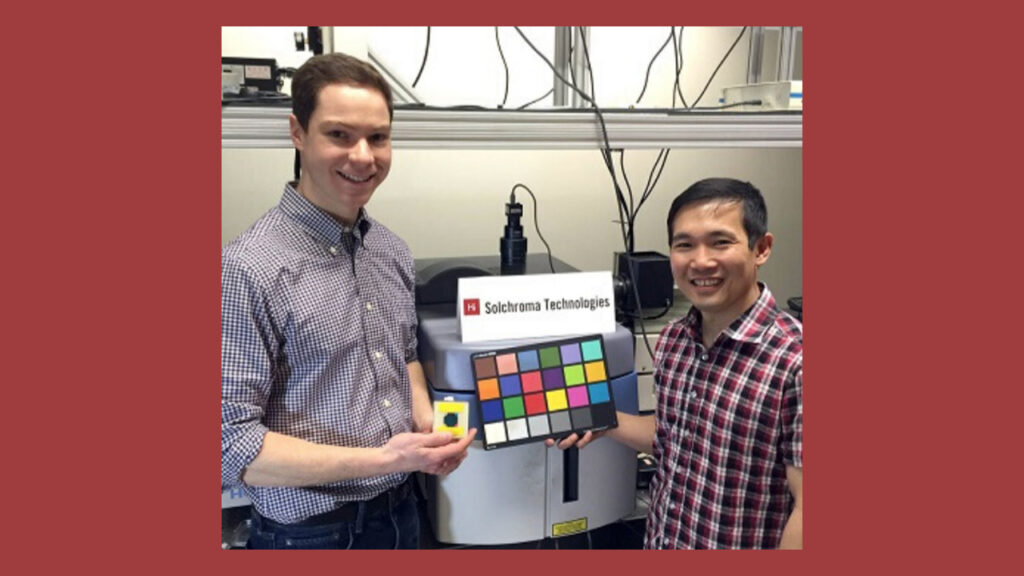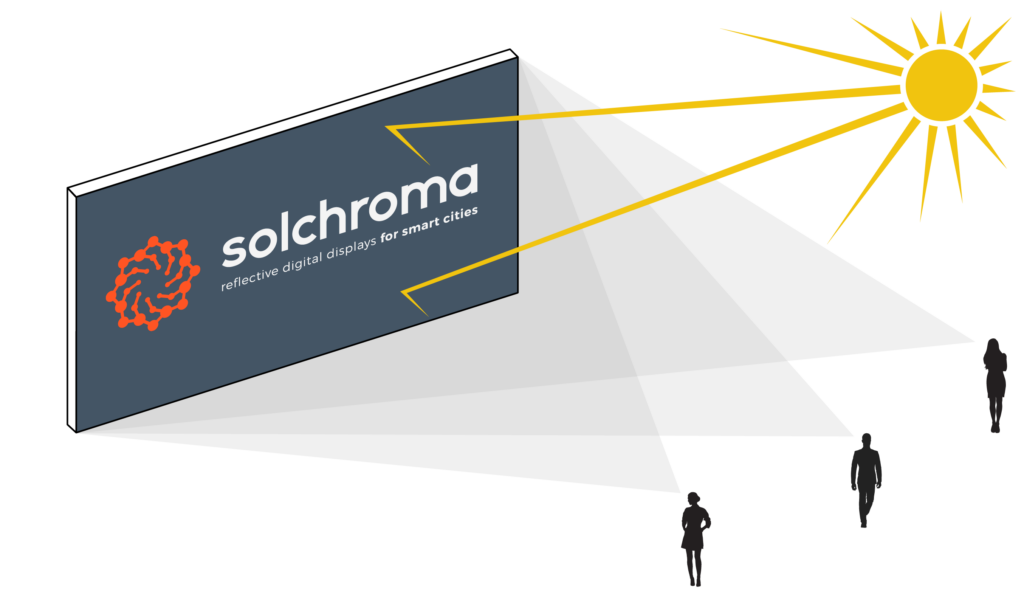Solchroma: Success Story
Outdoor lighting needs to be cleaner – and this startup is leading the charge

Reflective digital displays for the smart cities of the future
Solchroma is addressing a climate change driver you might not have noticed. When you consider the contributing factors of climate change, many things immediately come to mind: gas-guzzling cars, belching cows, and dirty, smoking coal plants, to name a few. While every aspect of these issues is important, climate change is an all-encompassing problem, and innovations in the oft overlooked problem sectors are just as needed. This includes the way we light our cities and towns; though we have made great strides in prior decades to make our lighting systems far more efficient through the use of LED bulbs – which use 75% less energy than incandescent bulbs – we still have a long way to go.
A specific pain point in this space is the problem of the digital billboard, as these displays can burn through well over 15 times the amount of energy annually as the average household even with modern bulb technology. It may be commonplace to become complacent with innovation in cleantech, but this sentiment cannot be accepted when it comes to the accelerating effects of climate change. No one knows this better than the team at Solchroma, a startup that is fighting this energy crisis by building full-color, reflective digital displays for the smart cities of the future.
What will our cities look like in the coming decades? Just ask Solchroma.
Based out of Greentown Labs, Solchroma has pioneered a technology that can be used in place of LEDs for any outdoor signage or advertising that traditionally uses lighting. Their technology is capable of consuming less than 1% of the energy of existing LED-based digital signage. Modeled after the color-changing ability of cuttlefish, it works by employing a system of electroactive polymer actuators that function as hydraulic pumps; the pumps move colored ink from reservoirs behind a pixel surface into separate view able color filter chambers. From there, ambient light is selectively absorbed through layered filters and reflected back to the viewer.
This innovation will allow us to replace emissive displays with reflective ones (as shown below); emissive displays are responsible for the harsh, artificial lighting we generally see used for digital displays. Solchroma’s reflective displays provide a softer, more natural aesthetic and the brightness of the reflected image is proportional to the light intensity that is shining on them. Using their displays means zero light pollution and virtually no energy usage when in direct sunlight.

FORGE impact: automation
When they contacted FORGE about receiving supply chain help, the Solchroma team was looking for help to meet their display performance and cost goals. They had the capability to produce their reflective displays in extremely low volumes, but they wanted to scale as quickly as possible.
The problem was production automation; though they had already automated a few parts of their manufacturing process, they needed help automating the precise application of conductive material to make electrical connections. They had previously accomplished this task only manually, and quickly recognized that that process was not sustainable through full volume production. The ink-filling process was slow and human error produced unreliable results, highlighting the need for some sort of robotic system solution.
Using our network of over 350 regional suppliers, FORGE was able to provide Solchroma with connections to Parallel Design, an engineering design firm perfect for small engineering problems like this, as well as an EIR grant worth $10,000 to help fund the creation of this system. This provided immense peace of mind for Solchroma CEO Roger Diebold.
“Working with FORGE is a low risk way to complete the project and find a contractor that really knows what they’re doing,” he said.
Armed with new funding and an engineering firm well-suited to their needs, Solchroma was able to contract with Parallel Design and move past this supply chain hurdle as efficiently as possible. Solchroma continues to expand their company and remains at the top of this niche field of clean technology with the help of FORGE, even contracting with Parallel a second time to streamline ink filling and air removal in their device. The Manufacturing Initiative has provided the startup over 30 connections to date with vetted and trusted suppliers, and looks to continue to support Solchroma in everything that they do.
